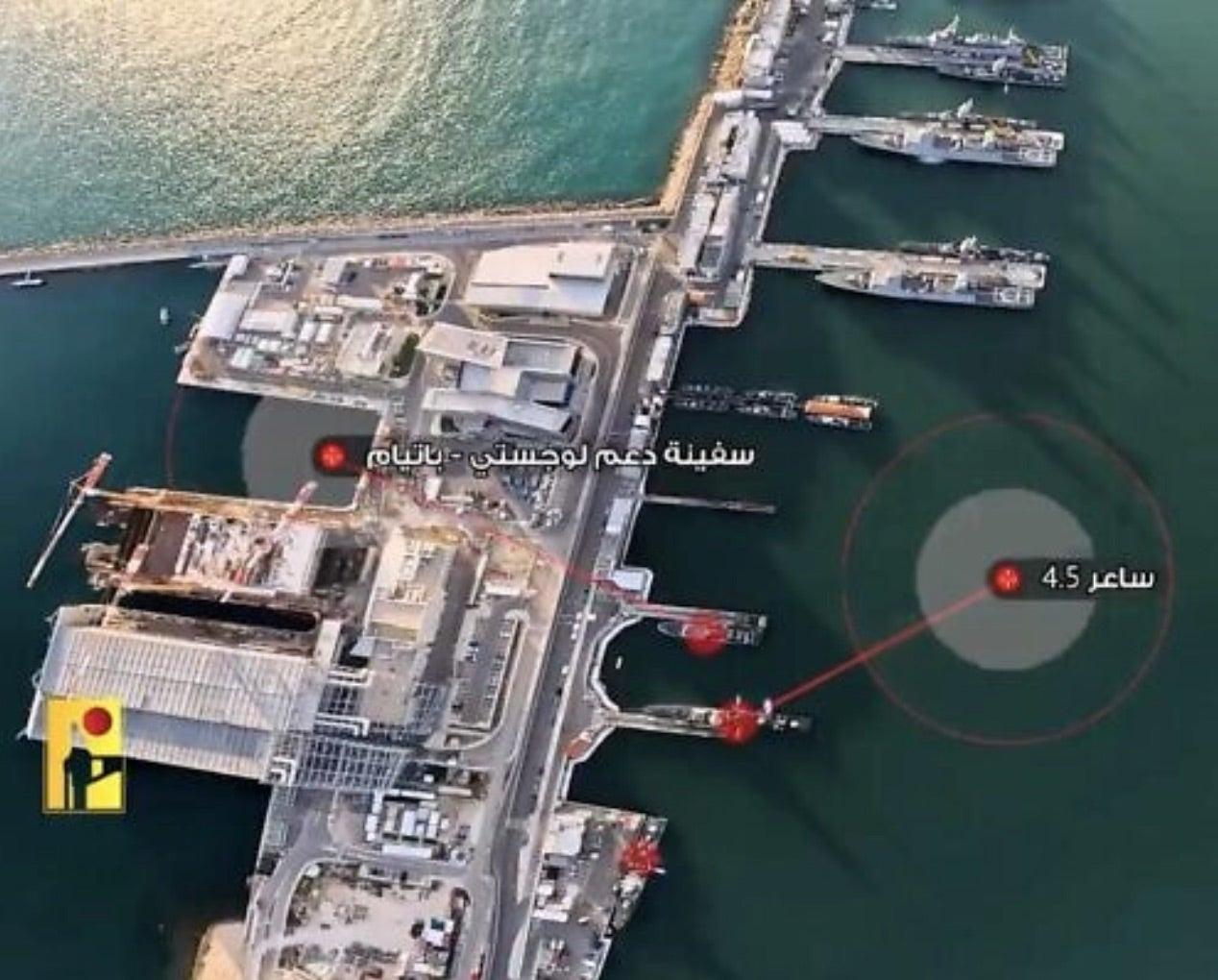
2024-6-24 21:0:2 Author: www.sentinelone.com(查看原文) 阅读量:4 收藏
Last week, PinnacleOne revealed three emerging threats to the “deep tech” venture ecosystem underpinning western technological and strategic advantage.
This week, we draw executive attention to the flashpoint risk of war between Israel and Hezbollah, which would change the security environment for most civilians in Israel, disrupt trade in the eastern Mediterranean and potentially pull larger powers into a regional conflict.
Please subscribe to read future issues — and forward this newsletter to interested colleagues.
Contact us directly with any comments or questions: [email protected]

The simmering standoff between Hezbollah and Israel is close to boiling over as each side escalates political rhetoric, increases cross-border strikes, and moves military forces into battle positions.
Background and Recent Events
The Israel-Hezbollah conflict has its roots in the Lebanese Civil War of the 1980s when Hezbollah emerged as an Iran-backed Shia militant group opposed to Israel’s presence in southern Lebanon. The conflict escalated significantly in 2006 when Hezbollah’s abduction of Israeli soldiers led to a 34-day war that resulted in over 1,200 Lebanese and 159 Israeli deaths. Since then, tensions have remained high with periodic exchanges of fire across the Israel-Lebanon border.
Most recently, this intensified in the wake of Hamas’s October 2023 attack on Israel, which has seen tens of thousands of Israelis displaced from northern areas and increasing military reinforcement of frontier positions. Since the start of the Gaza War, the IDF has hit thousands of Hezbollah sites and killed hundreds of fighters, triggering increasingly cross-border skirmishes and strikes.
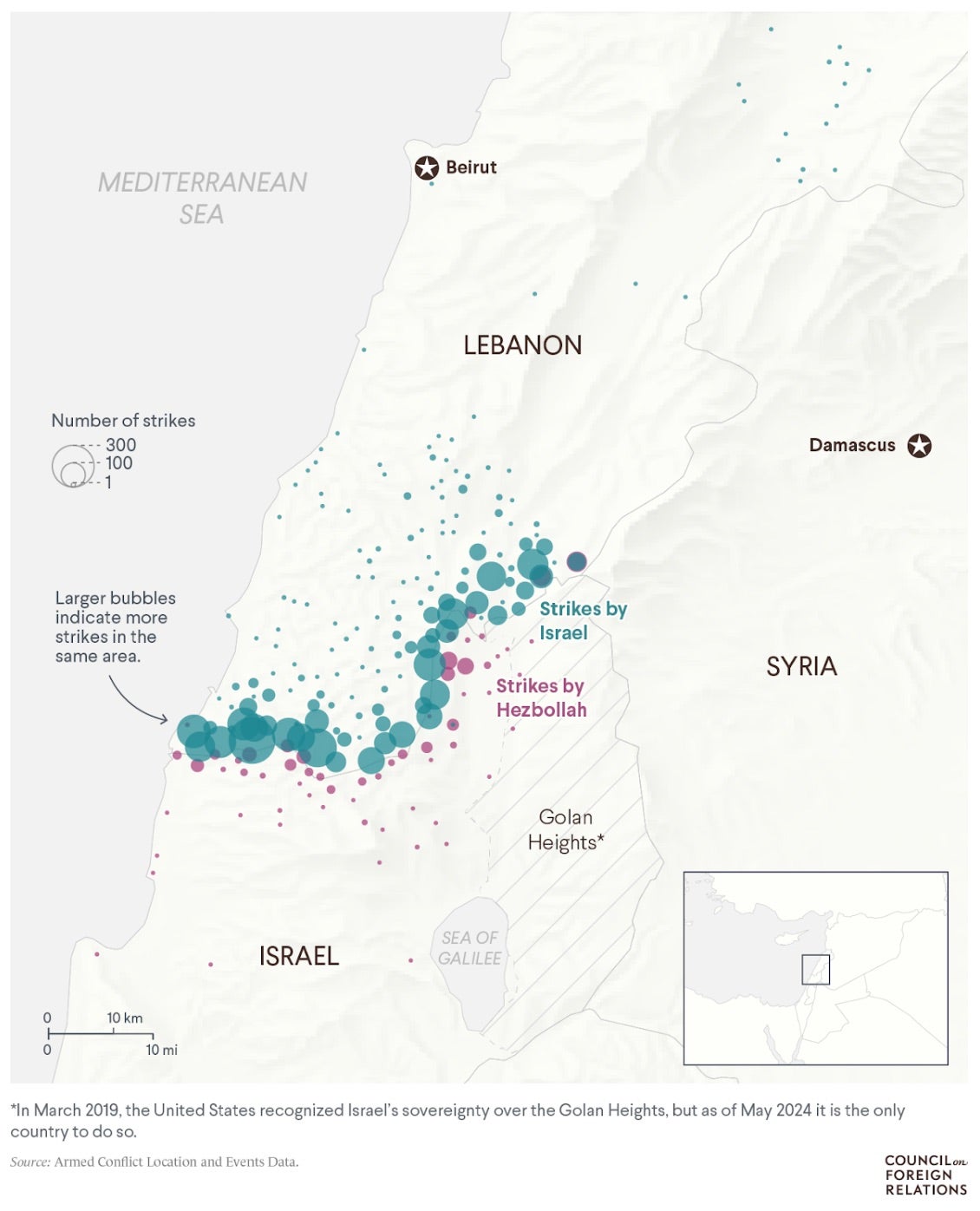
Fear of a war breaking out on this northern front has gripped policy makers since the start of the Gaza conflict. These fears are now close to realization given recent events. On June 18, the Israeli foreign minister said the government is “getting very close to the moment of deciding on changing the rupees of the game against Hezbollah and Lebanon.” Shortly thereafter, the Israeli Defense Forces announced that “operational plans for an offensive in Lebanon were approved and validated, and decisions were taken on the continuation of increasing the readiness of troops in the field.”
Returning from the region, Washington Post reporter Shane Harris recently described how a sense of pessimism, even fatalism, has seeped into Israel’s national security and political leadership. These officials hoped to initially reach a resolution with Hezbollah after achieving a victory over Hamas, but this optimism has completely faded, and now “everything is turning to the north…[with] reservists getting called up to go back to their 8200 site in the north… [and] a sense of inevitability that they will now have to deal with Hezbollah because people in the north cannot return to their homes and because Hezbollah was not standing down.”
Last week, Biden’s Middle East envoy, Amos Hochstein, issued an ultimatum to Hezbollah — and by proxy to Iran — to “de-escalate within five weeks in Lebanon or risk an Israeli offensive supported by the U.S.” The Kuwait Foreign Ministry told its citizens to leave the country immediately, as has North Macedonia.
Even as senior U.S. diplomats frantically shuttle between Jerusalem and Beirut to find an off-ramp, CNN reported on June 19 that Israeli officials told the U.S. they are “planning to shift resources from southern Gaza to northern Israel in preparation for a possible offensive against [Hezbollah]” and are making the case that it “can pull off a ‘blitzkrieg’.” A senior Biden administration official was quoted as saying “We’re entering a very dangerous period. Something could start with very little warning.”
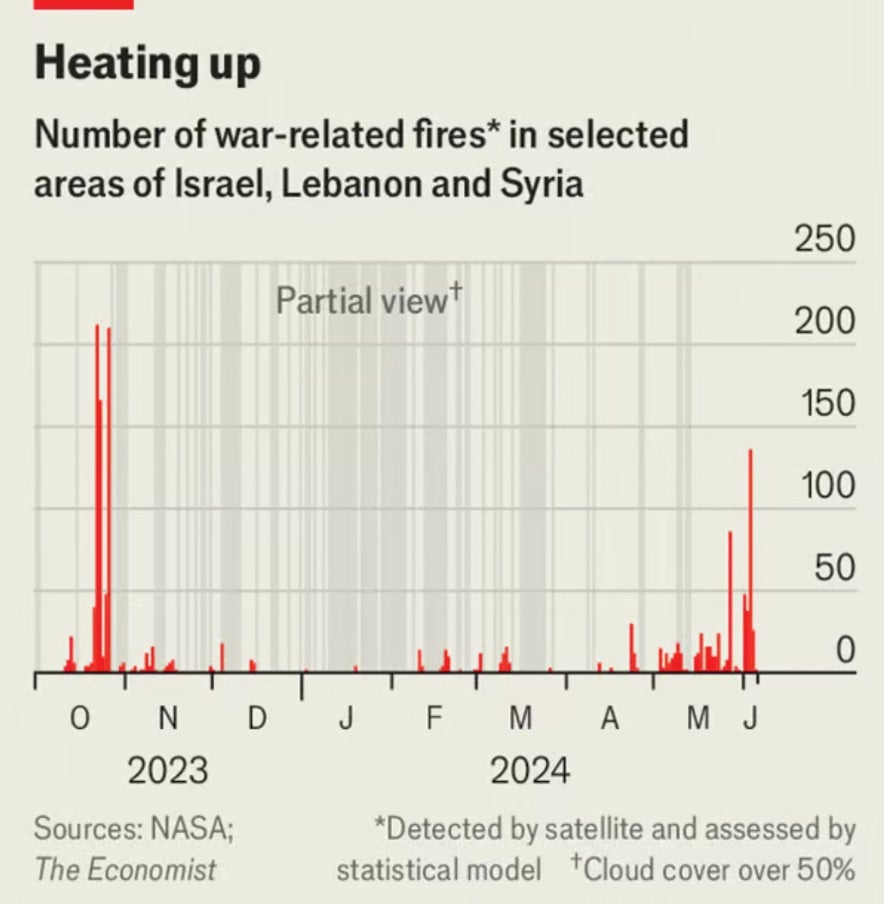
Escalation Scenarios
Any major outbreak of war between Israel and Hezbollah would immediately put civilian population centers and infrastructure at risk of a massive barrage of missile strikes. Despite the success of Israel’s Iron Dome interception system, military officials recognize that it would be insufficient under an all-out missile attack. Many would get through, even if the impact wouldn’t be, as one official said to Shane Harris, “catastrophic.” Daily life in most urban areas would immediately change, with continuous emergency alerts and many forced to take intermittent shelter.
Even if the IDF is able to pull off a tactically successful “blitzkrieg” to establish a buffer north of the Litani River sufficient to insure security for displaced communities, they are unlikely to eliminate most of Hezbollah’s significant military capabilities, which includes approximately 150,000 rockets and missiles, including thousands of precision munitions, and at least 40 to 50,000 fighters.
Hezbollah could marshal a counterattack on IDF forces and use asymmetric means beyond the northern front to shift the political calculus. For example, Hezbollah released hi-fed drone video of Israeli infrastructure sites, including Haifa port, oil/gas storage tanks, military complexes and Iron Dome batteries, as a signal that they could target key facilities and impose a large economic and strategic cost on the country.
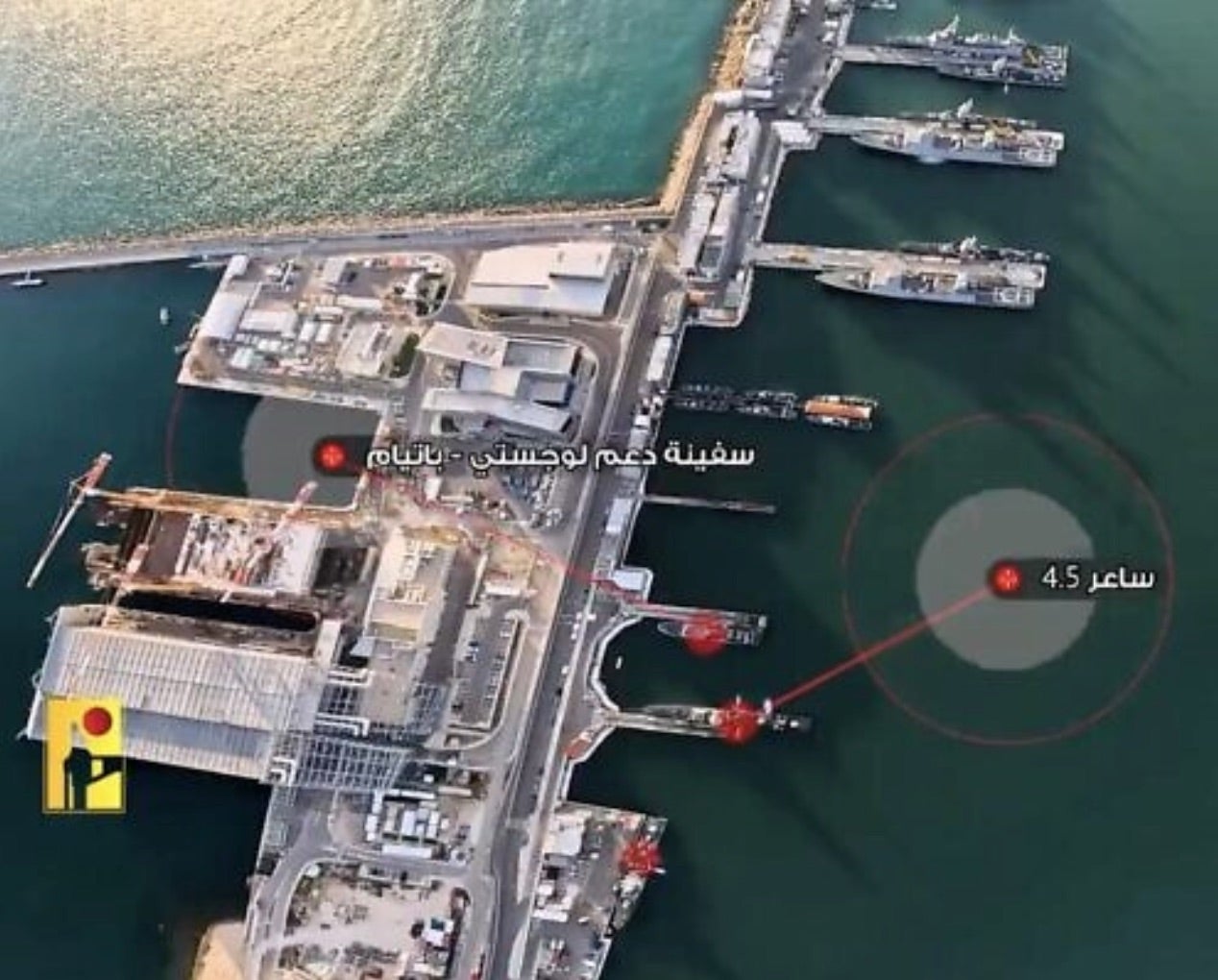
Hezbollah chief Nasrallah said on June 19 that they would fight with “no rules and no ceilings” and could attack targets throughout the eastern Mediterranean, including U.S. military garrisons (holding 1,000+ troops) as well as EU (but not NATO) member state Cyprus, from which Israel might launch airstrikes. Nasrallah threatened that in an all-out war, Israel must expect “us on land, by sea and by air… [and] all its ports, all its boats and ships” would be targeted.
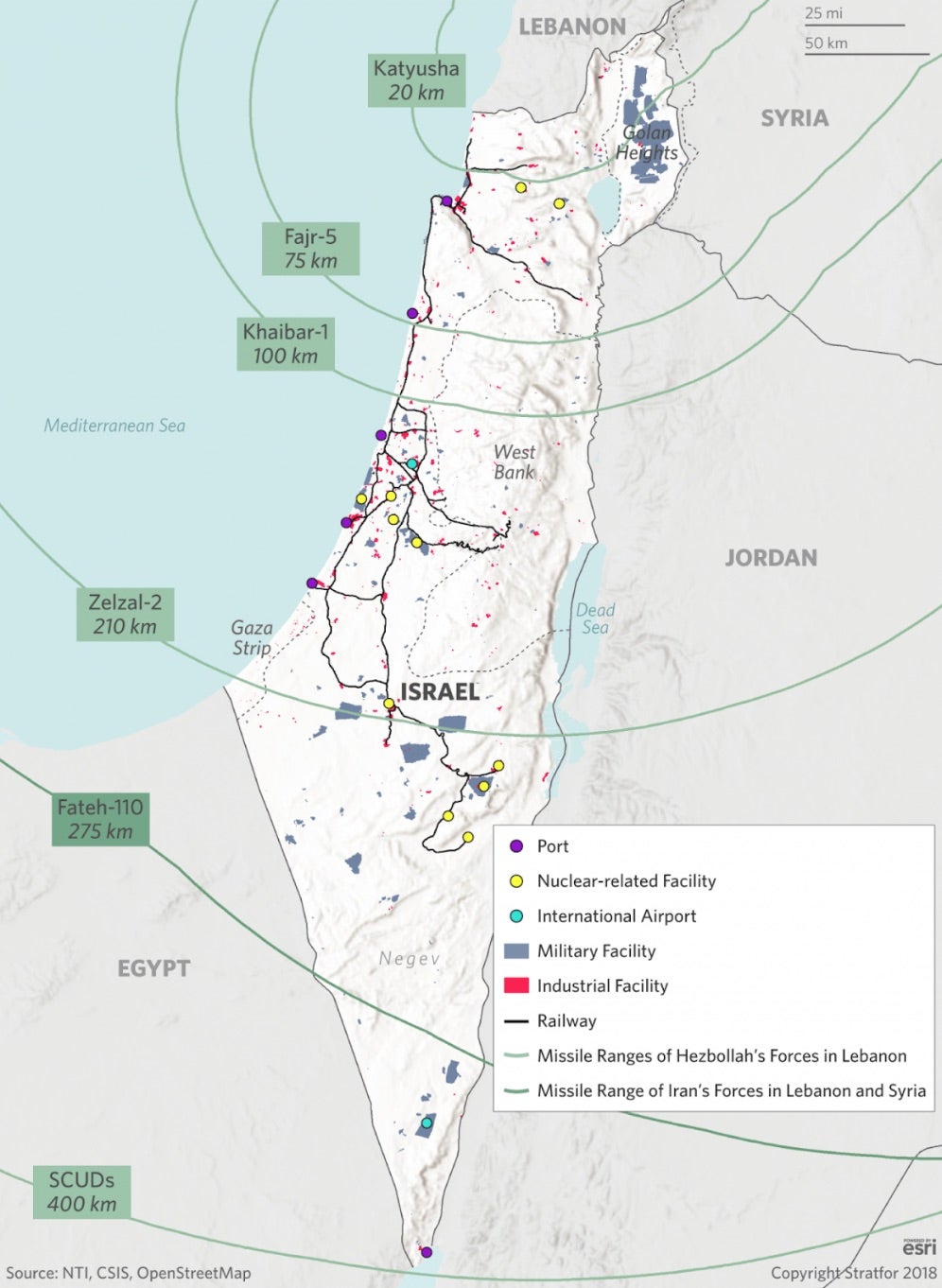
As the Israeli Defense Minister was in Washington to discuss the shifting tempo of Gaza operations and rising hostilities with Hezbollah, Air Force General C.Q. Brown, the chairman of the Joint Chiefs of Staff, said Sunday that an offensive into Lebanon would “drive up the potential for a broader conflict” that might bring in Iran who “would be more inclined to support Hezbollah.” Foreign fighters are expected to pour into any larger conflict:
“Eran Etzion, former head of policy planning for the Israeli Ministry of Foreign Affairs, said at a panel discussion hosted by the Washington-based Middle East Institute on Thursday that he sees “a high probability” of a “multi-front war.” He said there could be intervention by the Houthis and Iraqi militias and a “massive flow of jihadists from (places) including Afghanistan, Pakistan” into Lebanon and into Syrian areas bordering Israel.”
What might start as a ground offensive on the border could quickly escalate into a wider conflict that pulls in U.S. military forces as an active belligerent. The U.S. is already repositioning carriers to prepare. If the U.S. is in the fight, the U.K. and even French might follow, and if Hezbollah declares war on those nations, Iran may feel it must tag in as well. If no off-ramps are taken along this escalation ladder, a major war could erupt in the Middle East.
Failing that, even localized conflict could see major disruptions to regional trade and significant impacts to daily life and safety for individuals in Israel and Lebanon.
Implications for Businesses
As we described in our last post on navigating escalation dynamics in the Middle East, executives should maintain a heightened state of alert, with a tight loop between risk professionals and organization leaders in the region. In particular, executives should know that staff in Israel are well-acquainted with the realities of war. Many participated in mandatory military service in their youth and some may have been recently deployed for operations in Gaza. As a result, local staff are best equipped to determine their own safety protocols.
- During the coming weeks, the company should exercise work from home flexibility as requested by employees.
- Non-Israeli citizens in the country should be afforded the opportunity to leave if they have not already been offered such accommodations.
- The company should closely monitor Israel’s announcements and changes in diplomatic security posture.
To prepare for a more intense and destructive regional conflict, executives with staff and/or business interests in the region should:
- Expect significant disruptions to their workforce (e.g., call-up, family support, loss of life) and in-country operations (e.g., cascading impacts from attacks on Israeli infrastructure).
- Re-examine business continuity plans and crisis response playbooks.
- Prepare for large commercial spillovers to regional trade and energy markets.
Given the immense costs to taking a large-scale military action, the closer states get to war, the stronger the incentives often become to find a short-term political resolution that “kicks the can”. One might hope that ongoing and intense diplomatic efforts succeed in finding a feasible off-ramp, but the present trend and recent statements provide cold comfort for this view. Prudent executives must prepare now for a significant increase in the regional risk environment.
如有侵权请联系:admin#unsafe.sh